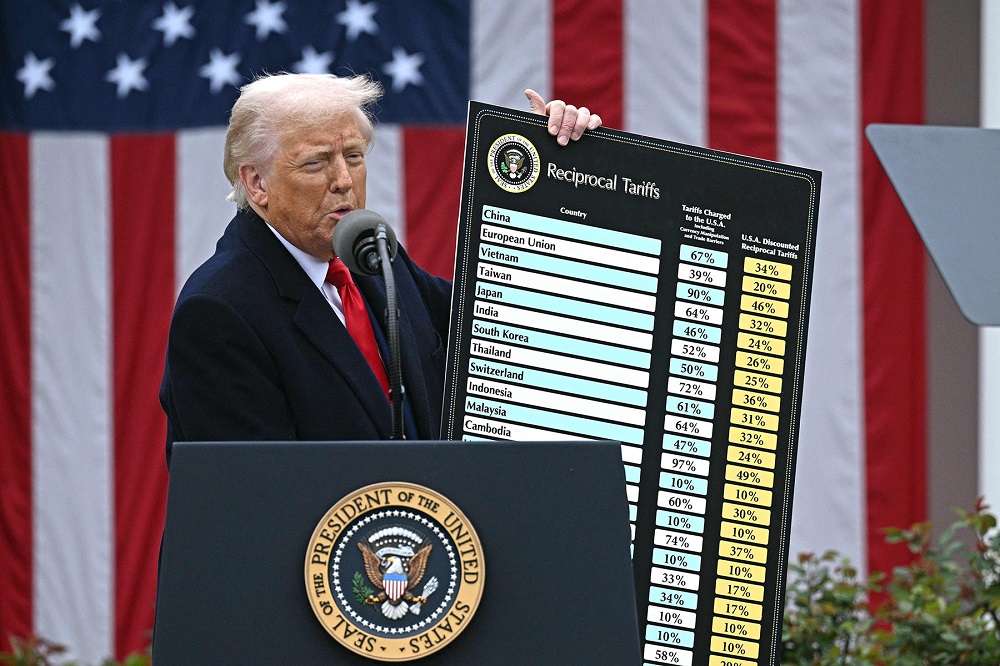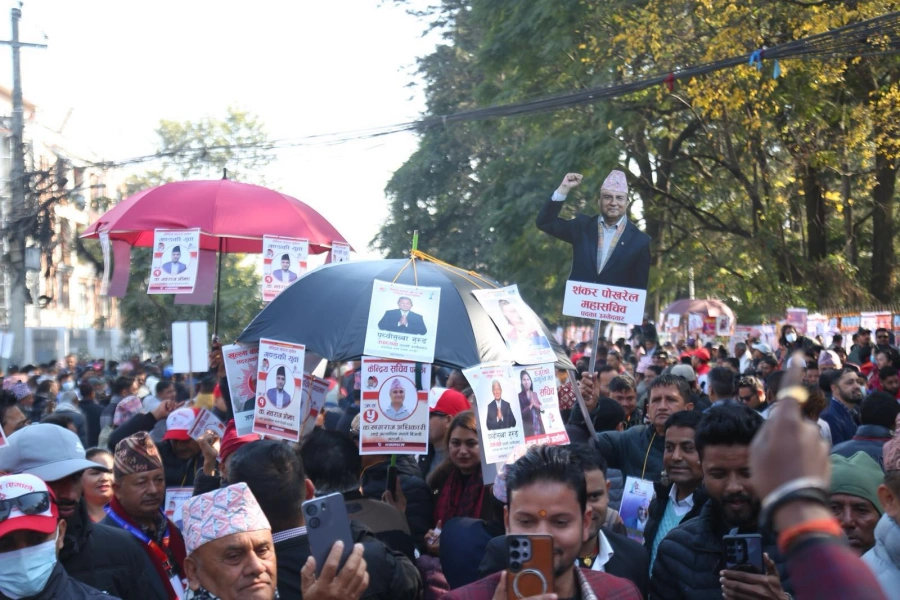When US President Donald Trump announced the details of his wave of tariffs to a packed Rose Garden at the White House on April 2, he broke into a riff on the meaning of the word "reciprocal," Deutsche Welle reported.
"Reciprocal tariffs on countries throughout the world," he said. "Reciprocal. That means: they do it to us and we do it to them. Very simple. Can't get any simpler than that."
Trump announced two main sets of tariffs that day — a 10% levy on practically all US imports from all countries, and then an additional set of "reciprocal tariffs" on various countries, ranging in level according to a much-derided government formula almost exclusively focused on trade deficits, DW reported.
The US President and his economic team have repeatedly insisted that the reciprocal tariffs are simply returning the same barriers that US exporters face when selling to the same countries.
Flawed formula
However, a range of economists, banks and financial institutions have pointed out that the tariffs are not reciprocal and that the formula Trump's team used to calculate them makes little economic sense, added DW.
"The formula he used is nonsense," Bill Reinsch, a senior economics adviser with the Center for Strategic and International Studies (CSIS), told DW.
"Everybody knows it's nonsense and bears no relationship to what they said they were going to do, which was to be reciprocal and factor in actual trade barriers, including tariffs, but also nontariff barriers. There's no evidence that they made the slightest effort to do that."
Trump announces 90-day pause on ‘reciprocal’ tariffs with excep...

Doug Irwin, a nonresident senior fellow at the Peterson Institute for International Economics and a renowned global trade expert, also says the tariffs are clearly not reciprocal for a number of reasons.
He told DW that a key point was that the formula used by the White House did not even take into account the levels of tariffs imposed by other countries, and simply took America's trade deficit in goods with each country and then divided it by the amount of goods imported into the US from that country, according to the German media.
Reciprocal tariffs, he noted, have been applied to countries with which the US have existing free trade agreements, such as Chile, Australia, and Peru and South Korea.
"Those are already reciprocal in the sense that we don't charge them and they don't charge us," he said. "What's going on is it's not foreign trade barriers; it's the trade deficit that they've focused on. That's the metric that they're using to impute trade barriers."
Anything but reciprocal
Data from the World Trade Organization (WTO) backs up the arguments made by several economists that Trump's allegedly reciprocal tariffs will actually be far higher than most of those levied in the opposite direction.
Perhaps the most prominent example is China. Beijing was the focus of Trump's tariffs in his first term as president from 2017 to 2021 and with some justification. China had consistently charged higher tariffs on US goods than vice versa.
However, the latest sweeping tariffs from Washington mean that US tariffs on Chinese goods are now significantly higher than the other way around.
According to some estimates, US tariffs on Chinese goods are now at around 75%, compared to a 56% rate in the other direction. Meanwhile, Trump has threatened to increase existing tariffs by another 50%, after China responded to his latest levies with a 34% hike.
Another clear example is Vietnam. Washington will now charge Vietnam a 46% tariff, but the WTO's Tariff & Trade Data portal shows that Vietnam charges the US a simple average tariff of 9.4% and a weighted average tariff, which takes into account the share of products at different tariff rates, of 5.1%.
However the Vietnam example shows it is clearly not about reciprocity.
Hanoi immediately offered to drop all tariffs on US imports but Trump's trade advisor Peter Navarro responded in an interview on CNBC that the offer would not be enough "because it's the nontariff cheating that matters." He cited Chinese goods being sold through Vietnam and VAT as examples of "cheating."
Bill Reinsch says the fact that the White House did not measure tariff barriers, let alone nontariff barriers of the kind alleged by Navarro in its formula, suggests it is "not really interested in the idea of reciprocity."
"It's just a game. And so there will be negotiations," said Reinsch.
Such negotiations with the likes of Vietnam will undoubtedly focus on the countries' trade balances, but Doug Irwin thinks it's "implausible" that the US could have balanced trade or a trade surplus with Vietnam, given the nature of their respective economies.
"Vietnam has received a lot of foreign investments, so we export components to them, but they export final assemble goods to us," he said, adding that this "naturally implies there's going to be a trade deficit."
What Trump really wants
Bill Reinsch argues that for more than 40 years, Trump has spoken about how he believes the US is being "ripped off" on global trade. He believes Trump genuinely wants to restructure global trade, which, however, has turned into a "revenge thing."
"The problem with it is he really only has one metric, which is the bilateral trade deficit, and he really only has one tool, which is tariffs," said Reinsch.
For the CSIS economist the Trump administration fundamentally believes trade deficits are unfair, and that they will only be satisfied when those deficits are eliminated — however unrealistic and economically improbable that goal is, DW reported.
"If you listen to Navarro, and actually sometimes Trump, that's the undertone here, that if we have a deficit with country A, that can only be because they're doing something unfair, and trade should be balanced," Reinsch said, adding that such a reasoning "doesn't make any sense."
Irwin agrees, saying that trade deficits are Trump's ultimate concern. "Not so much the revenue, it's not so much equality or fairness or reciprocity. He doesn't like trade deficits. And he's been very consistent on that for 40 years."



































